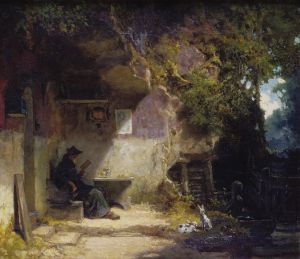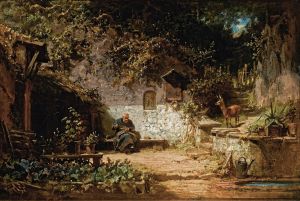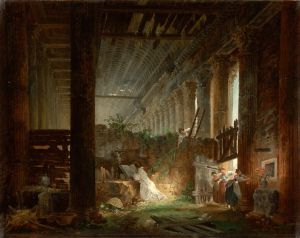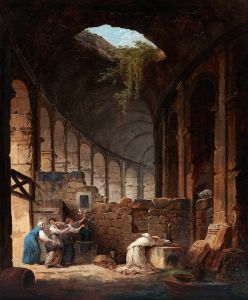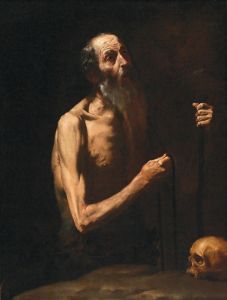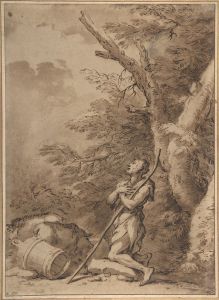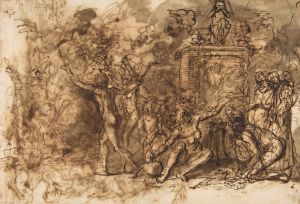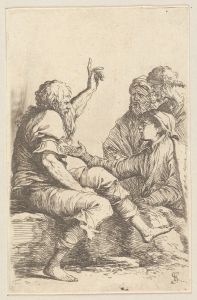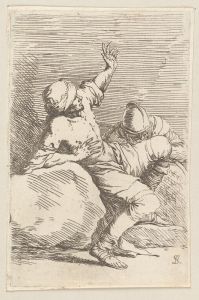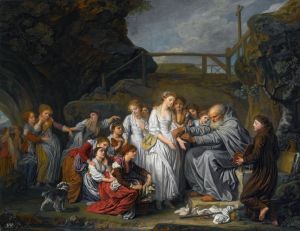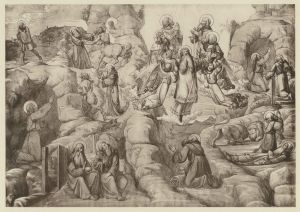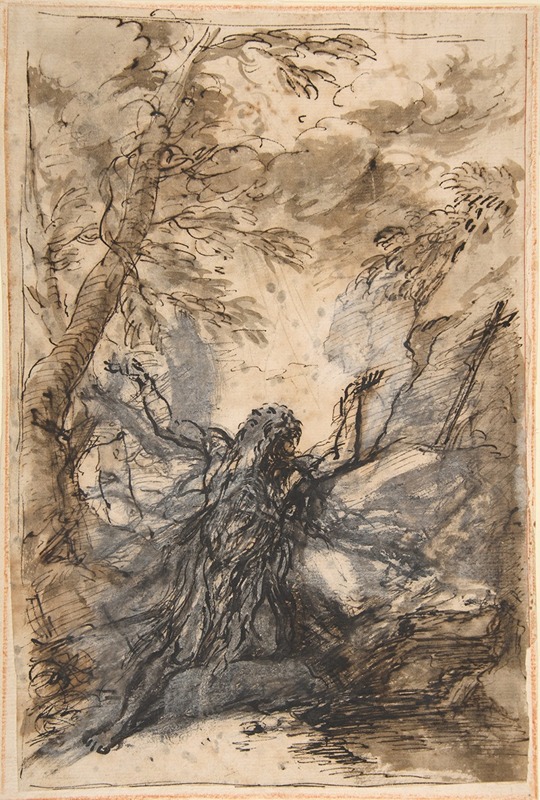
St. Paul, Hermit
A hand-painted replica of Salvator Rosa’s masterpiece St. Paul, Hermit, meticulously crafted by professional artists to capture the true essence of the original. Each piece is created with museum-quality canvas and rare mineral pigments, carefully painted by experienced artists with delicate brushstrokes and rich, layered colors to perfectly recreate the texture of the original artwork. Unlike machine-printed reproductions, this hand-painted version brings the painting to life, infused with the artist’s emotions and skill in every stroke. Whether for personal collection or home decoration, it instantly elevates the artistic atmosphere of any space.
Salvator Rosa's painting "St. Paul, Hermit" is a notable work by the Italian Baroque artist, who was active during the 17th century. Salvator Rosa, born in 1615 in Naples, was a versatile artist known for his dramatic landscapes, portraits, and historical paintings. He was also a poet and an actor, which contributed to his reputation as a multifaceted figure in the Baroque period.
"St. Paul, Hermit" depicts the early Christian saint, Paul of Thebes, who is traditionally regarded as the first Christian hermit. According to Christian tradition, St. Paul fled to the Egyptian desert during the persecution of Christians under the Roman Emperor Decius in the 3rd century. He lived in solitude for many years, dedicating his life to prayer and penance. The story of St. Paul the Hermit was popularized by St. Jerome, who wrote a biography of the saint in the 4th century.
In Rosa's depiction, St. Paul is shown in a contemplative pose, reflecting his life of solitude and devotion. The painting captures the essence of the hermit's ascetic lifestyle, emphasizing his connection with the divine and the natural world. Rosa's use of chiaroscuro, a technique characterized by strong contrasts between light and dark, enhances the dramatic effect of the painting, highlighting the saint's spiritual intensity.
The background of the painting typically features a rugged, desolate landscape, which is characteristic of Rosa's style. He was known for his ability to convey the sublime and the wildness of nature, often incorporating dramatic skies and rocky terrains into his works. This setting not only serves as a backdrop for the saint but also symbolizes the isolation and harshness of the hermit's life in the desert.
Rosa's portrayal of St. Paul the Hermit reflects the Baroque era's interest in religious themes and the exploration of human emotion and spirituality. The painting is an example of how artists of the time sought to evoke a sense of awe and reverence through their work, using dramatic compositions and expressive figures.
While specific details about the commission or the exact date of the painting's creation are not well-documented, it is consistent with Rosa's body of work from the mid-17th century. His paintings often appealed to patrons who appreciated both the technical skill and the emotional depth of his art.
Salvator Rosa's "St. Paul, Hermit" remains an important piece within his oeuvre, showcasing his ability to blend religious narrative with the dramatic elements of Baroque art. The painting is a testament to Rosa's skill in capturing the spiritual essence of his subjects, making it a significant work for both art historians and admirers of Baroque painting.





